Unveil the mysteries of Egypt's enigmatic Djedefre Pyramid, a once towering structure shrouded in history. Explore its unfinished grandeur, architectural innovation, and enduring legacy through the ages in this compelling journey through time.
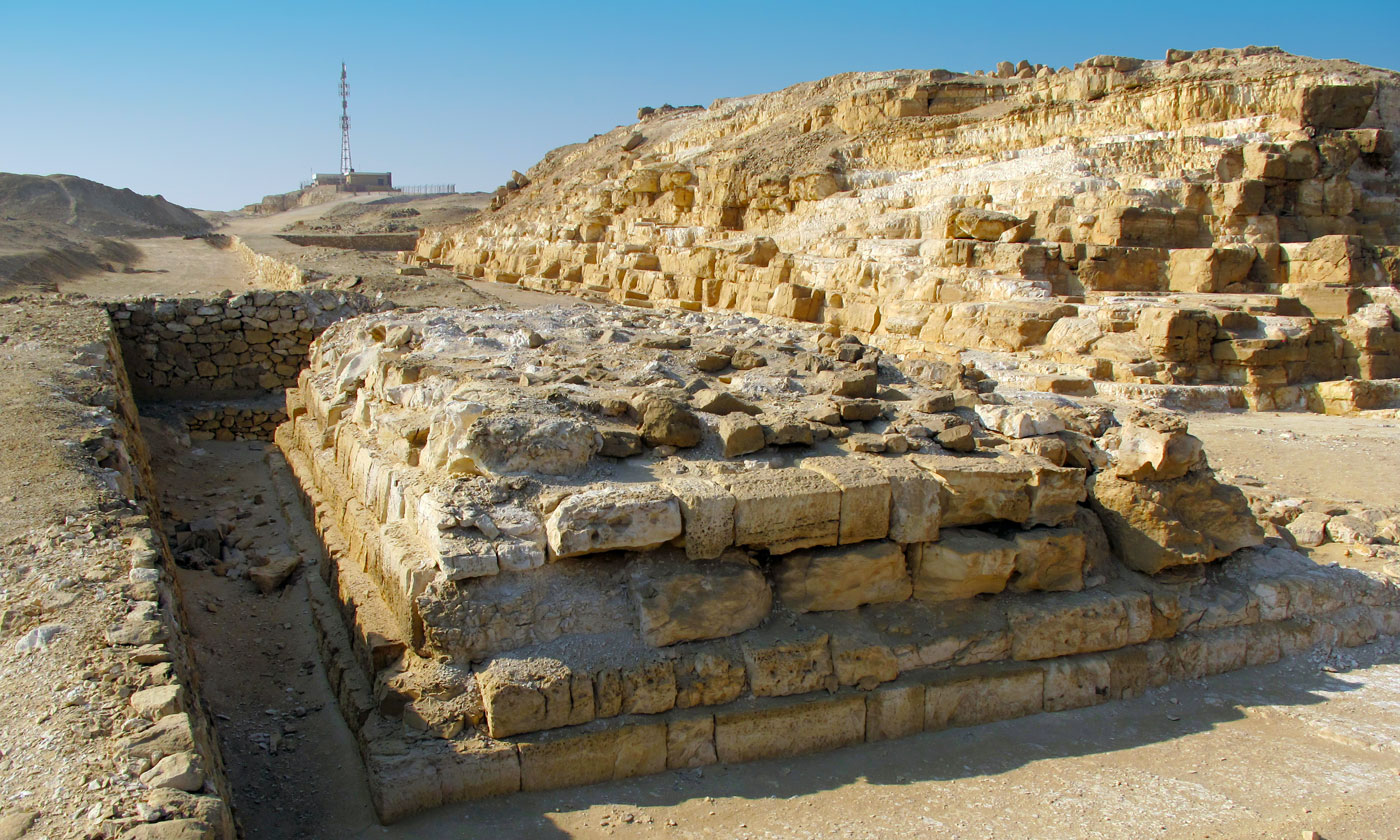
| Overview | |

|
|
| Location | Abu Rawash, Egypt |
| Pharaoh | Khufu's son |
| Structure | Incomplete Pyramid |
| Height | 67m |
| Base | 106m |
| Volume | 131,043 m3 |
| Materials | Local Limestone |
Out of all the 118 pyramids in Egypt, one pyramid seems to be more special, the pyramid of Djedefre, which has always been shrouded with many unanswered questions. It has been dubbed the lost pyramid as the pyramid may have been one the highest pyramids ever built that could rival the great pyramids of Giza. The Djedefre pyramid is believed to be the same height as the third pyramid of Giza, the pyramid of Menkaure.
The pyramid of Djedefre was considered to be one of the most beautiful of all the pyramids as it contained an exterior of polished limestone and imported granite and was crowned with a large pyramidion, but the site remains an unfinished funerary complex since its construction in the old kingdom by the fourth dynasty ruler Djedefra (2566-2558 BC), the name Djedefra means is Sehedu star, and the pyramid was once called "Djedefre's Starry Sky".
The destruction of the pyramid started at the end of the new kingdom (1550-1050 BC) all throughout the Roman Christian era in order to construct various temples and monasteries at the times of the 19th century, it was proven that the stones were being hauled away by camels at the rate of three hundred loads a day.
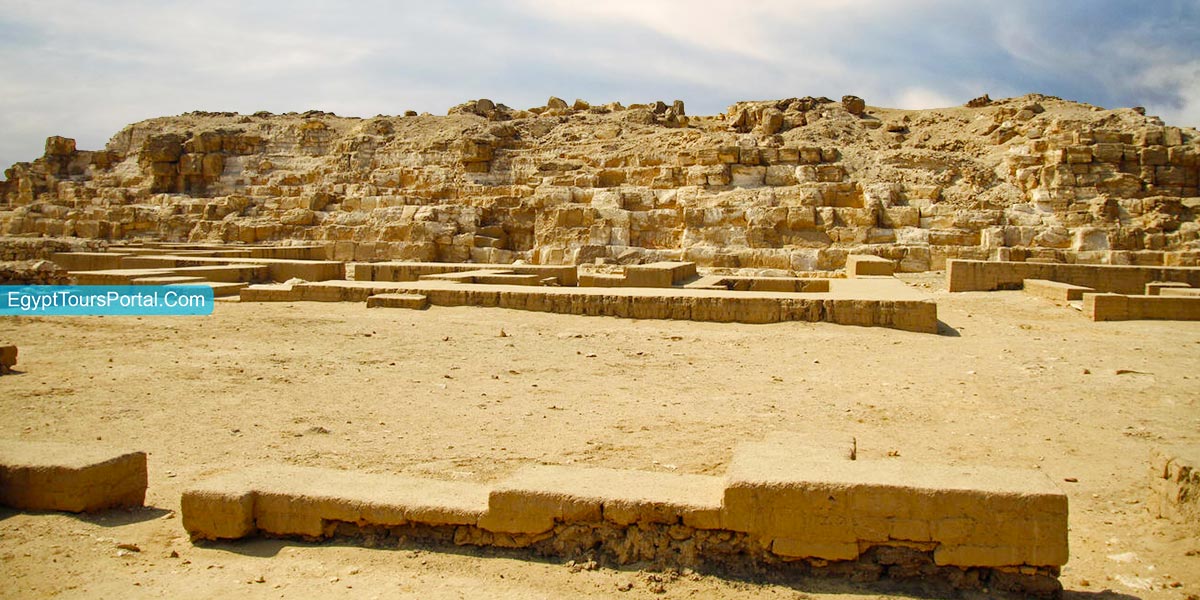
The Great Pyramid of Pharaoh Djedefre was established in the old kingdom of ancient Egypt (2700 – 2200 BC) in the 4th dynasty (2613 - 2494 BC), which was created to equal the size of the Pyramid of Menkaure. The true pyramid was called Djedefre's Starry Sky, which is made of mostly ruins found in the area of Abu Rawash, which is known as Egypt's northernmost pyramid.
Unravel the legacy of King Teti Pyramid. Explore history, architecture, texts, and the intriguing necropolis at Teti Pyramid. Discover its wonders today!
Read MoreRecent excavations from 1995 to 2005 unveiled a different narrative showcasing that Djedefre's pyramid was indeed completed during his reign. With the ravages of time, the pyramid has reached its current state, with statues of the king smashed as late as the 2nd century AD. The Roman era, about 2000 years ago, saw Djedefre's pyramid serving as a stone quarry, contributing to its diminished stature today.
The pyramid of Djedefre is located in the continuation of Gebel El-Ghigiga on the western bank of the Nile valley, in the archaeological area of Abu Rowash that belongs in the northern section of the necropolis at the city of Memphis. The pyramid is believed to have been destroyed for an unknown reason.
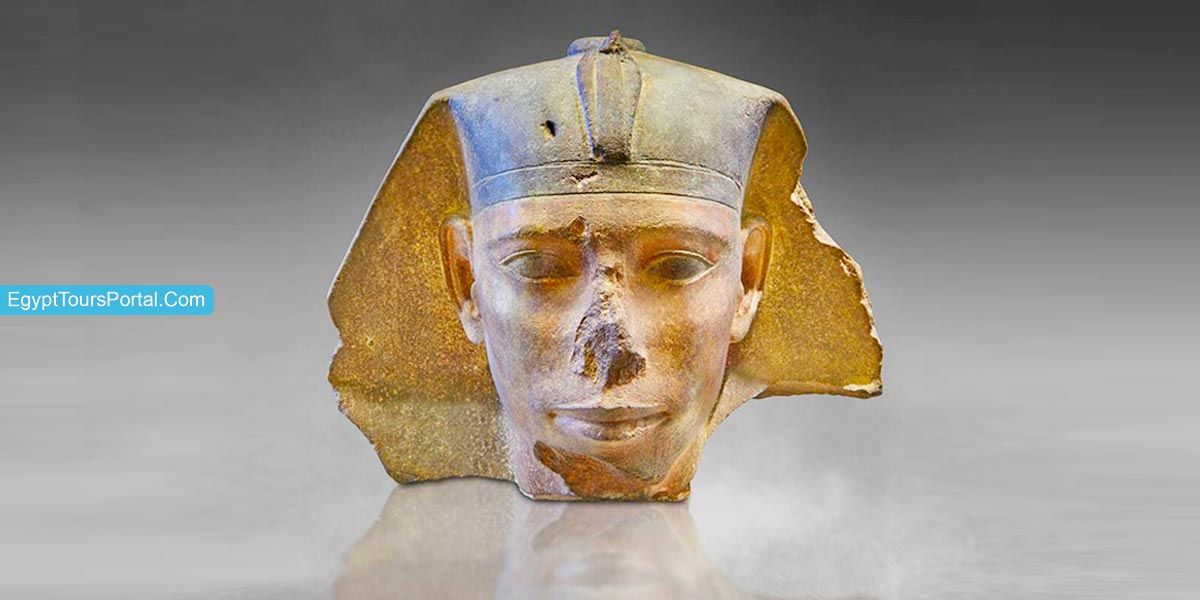
Pharaoh Djedefre (2566 - 2558 BC) was a prominent ruler of Egypt's 4th Dynasty during the Old Kingdom, which has left an indelible mark on ancient history. Djedefre succeeded his renowned father, Khufu, the architect of the Great Pyramid of Giza. Djedefre introduced the royal title "Sa-Rê" meaning "Son of Ra" and notably linked his cartouche name with the sun god Ra, showcasing a deep connection to divine symbolism. The relatively scarce monuments and records left by Djedefre add an air of mystery to his rule, inviting historians to piece together the puzzle of this enigmatic pharaoh.
Djedefre's marital choices added intriguing layers to his story. He married Hetepheres II, the widow of his brother Kawab and sister to both. Another queen, Khentetenka, emerges from statue fragments in the Abu Rowash mortuary temple. Djedefre's offspring include Hornit, Baka, Setka, and Neferhetepes, each playing a unique role in the intricate tapestry of ancient Egyptian royalty. Djedefre's reign lasted eight years, according to the Turin King List, which is found in Italy.
A monumental discovery of inscriptions related to Djedefre's 11th cattle count fuels scholarly debate among Egyptologists. Djedefre's pyramid was indeed completed in his reign, challenging the notion of a short rule due to an unfinished monument. Many scholars believe that the sphinx was created in his image, but the majority of archaeologists and historians believe it is not true.
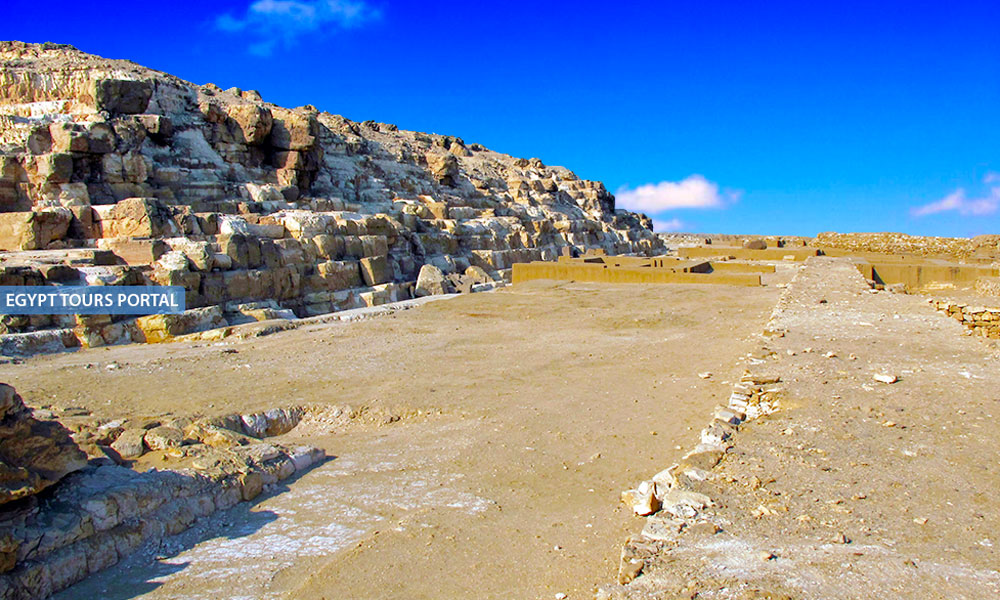
The architecture of the Djedefre's pyramid is highly different than its immediate predecessors, as the chambers were beneath the pyramid instead of inside. The pyramid of Djedefre was built on a natural mound as it symbolizes the Ancient Egyptian creation myth, and the chambers were constructed using a ramp. Djedefre employed the "pit and ramp" method, previously used in mastaba tombs. He excavated a pit measuring 21m x 9m and 20m deep in the natural mound. A ramp, inclined at an angle of 22º35', facilitated the construction of chambers and access passages within the pit.
After the inner chambers were built, the pit and the ramp were filled in, and the pyramid was built over the top; this allowed the chambers to be made without any form of tunneling and was able to avoid the structural complication regarding making chambers within the body of the pyramid itself. The pyramid's present height is 11.4 meters (37 feet), a significant reduction from its original height. The slope of the pyramid ranged from 51° to 52°. Djedefre departed from contemporary styles by adopting a rectangular enclosure wall oriented north-south, reminiscent of Djoser and Sekhemkhet's constructions. The pyramid of Djedefre was created by a rectangular enclosure wall oriented north-south, similar to the architectural style of Djoser and Sekhemkhet. The mortuary temple is on the east side of the pyramid; the boat pit contained many fragments of red, and the boat pit contained many fragments of red quartzite statuary with three painted heads from statues of the pharaoh Djedefra.
Solved, how the Pyramids were built, explore the top information about this question, read more about the workforce, architecture, and more..
Read MoreThis departure in design, along with the use of natural mounds, not only showcased architectural innovation but may have also served as a symbolic nod to the primeval mound in Egyptian creation myths. This distinctive approach possibly facilitated construction efforts, offering a pragmatic solution while embracing symbolic significance. To the north of the pyramid is the Wadi Quran, which is still unexcavated. The site also contains some remains and statues from the Coptic era. To the east of the pyramid complex is an old kingdom cemetery, and about two km to the south are the remains of a brick-built pyramid comprising a knoll of rock and a burial chamber.
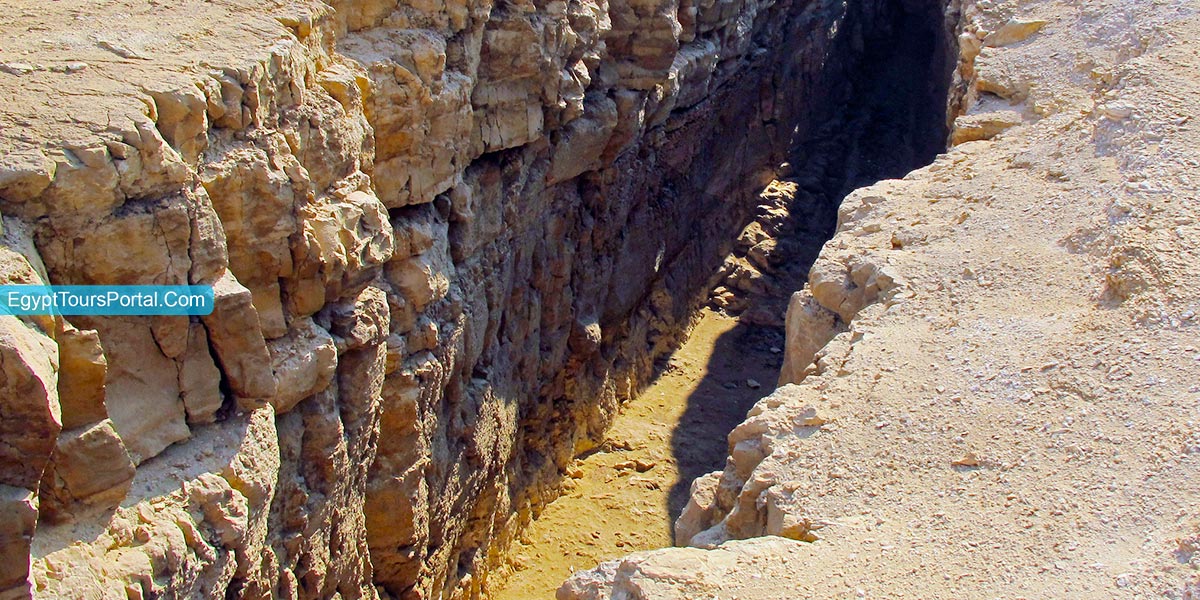
Djedefre's pyramid, aka "Djedefre Sehedu" or "Djedefre's Starry Sky" was constructed using third-dynasty building techniques, resembling the Step Pyramid of Djoser. He built on a rocky outcrop that featured a descending corridor leading to an antechamber and burial chamber. A foundation deposit with a copper axe blade was buried in the corridor while the lower layers were clad in pink granite; upper courses likely used stone cladding set at an angle, forming a true pyramid with a slope of approximately fifty degrees. Despite its ruined state, the pyramid was completed, but during the Roman period, it served as a quarry and military base.
Next to Djedefre's pyramid were satellite pyramids, with one possibly dedicated to a wife of Djedefre. Another small pyramid that was recently discovered contained chambers and fragments of a limestone sarcophagus that could have belonged to Hetepheres II, who was Djedefre's wife. Artifacts recovered included tiles, pottery fragments, alabaster jars, and lids with inscriptions linked to Khufu's Horus name. The presence of sarcophagus fragments did not conclusively indicate a queen's burial.
A trench pit on the east side believed to be the boat pit, is known to have contained around 120 intentionally defaced statues of Djedefre. Although no boat remains were found, the curved shape of the pit suggested accommodation for a boat's hull and prow. Romans and Christians likely defaced the statues.
The pyramid had inner and outer enclosure walls, which were connected by a covered walkway. The outer wall, around 2.5 meters thick, was oriented north-south. The causeway was known to be unusual for running north-south, which lacked a discovered valley temple. Storage rooms and housing for priests were typically near the valley temple, which was positioned beside the pyramid.
A walkway between the walls led to workshops, including a guard room, grain stores, a workshop, worker housing, bakeries, and a brewery. The workshops showed evidence of stone block shaping, and a diorite statue fragment of Menkaure suggested his involvement in restoration work. A house in the workshop courtyard is known to contain a reception hall, bedroom, and public rooms, and it bore Djedefre's seal, which indicates occupation by someone serving his cult.
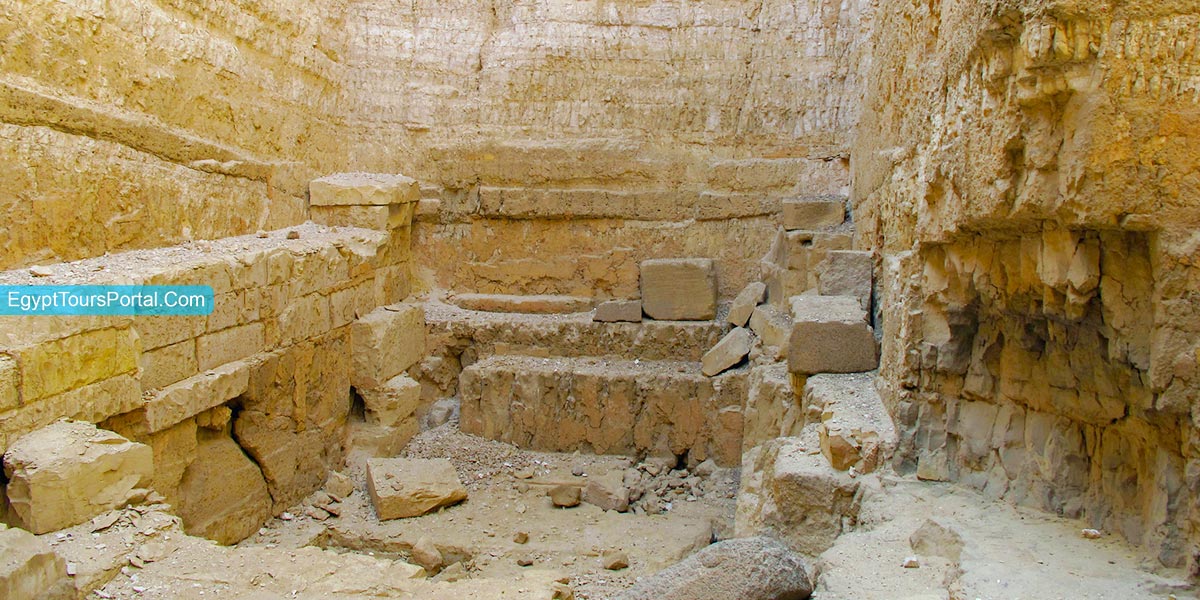
Recent excavations show that the pyramid was more than half finished. Had it been completed, estimates indicate it would have rivaled the size of the Pyramid of Menkaure, the third largest at Giza. It could have possessed a striking structure adorned with polished granite and limestone, topped by a grand pyramidion; it was believed to be the most aesthetically pleasing among the pyramids. The pyramid's fate took a downturn after the Roman conquest of Egypt under Emperor Augustus. The Romans, seeking construction materials, significantly dismantled Djedefre's creation, which was known as "Djedefre's Starry Sky".
This pillaging of the materials began around the end of the ancient Egyptian New Kingdom. It intensified during the Roman and early Christian eras, plus the Islamic periods and the days of the 19th century. The pyramid's original splendor was lost with time, with its stones repurposed for Roman endeavors. Even as late as the nineteenth century, the relentless removal of stone persisted, highlighting the enduring impact of the pyramid's deconstruction on the landscape, with up to three hundred camel loads of stone taken away daily.
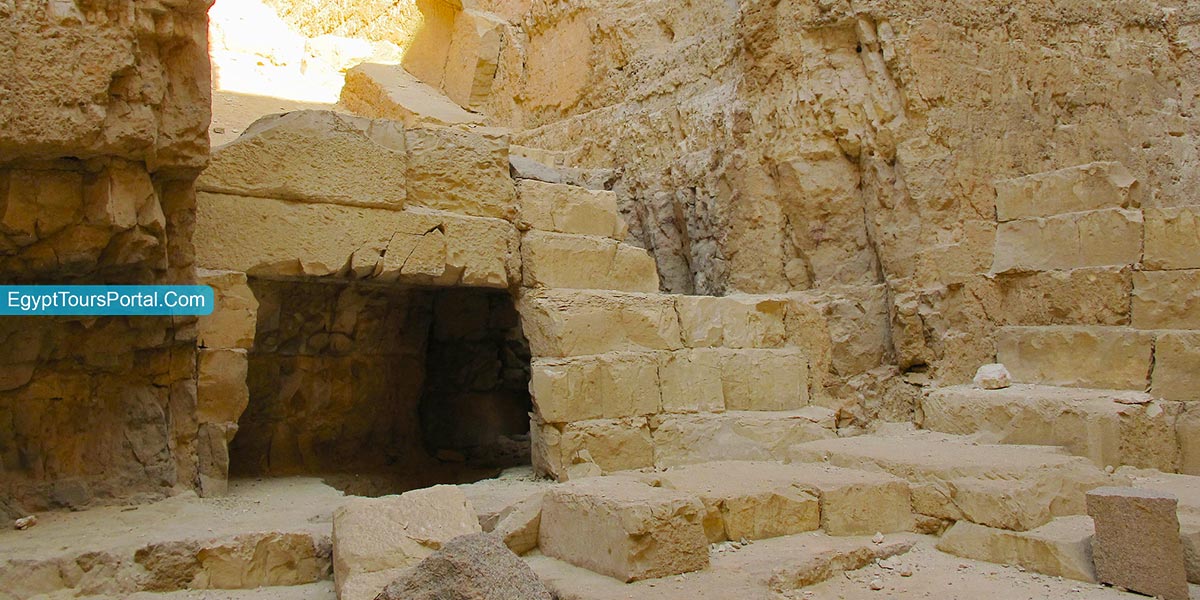
Egypt is the home of some of the most majestic constructions in the world, which hypnotizes the mind and showcases new levels of greatness and beauty, so go on the adventure you always dreamed of and explore all of Egypt's enchanting destinations through our Egypt holiday packages.
Private 4 Days Cairo Tour Packages for South African Travelers 4 days Cairo Egypt To...
Tour Location: Cairo – Giza...
5 Days Cairo and Alexandria Tour Package For South African Travelers 5 days Cairo an...
Tour Location: Cairo/Giza/Alexandria...
6 Days Cairo, Luxor & Aswan Tour Package For South African Travelers 6 days Cair...
Tour Location: Cairo/Giza/Aswan/Luxor...
Amazing 7 Days Cairo and Hurghada Holiday for South African Travelers 7 Days Cairo &...
Tour Location: Cairo – Giza – Hurgh...
Yes, Pharaoh Djedefre built a pyramid which is located at Abu Rawash near Giza in Egypt.
Djedefre was the son of Khufu, who is credited with the construction of his pyramid. The Pyramid is found at Abu Rawash, which is the size of the Menkaure Pyramid, which is the largest third pyramid in Giza.
The Pyramid of Djedefre is believed to have been built around 2575 BC during the 4th Dynasty of the Old Kingdom
The entire country of Egypt deserve to be explored with its every heavenly detail but there are places that must be seen before any other such as the breathtaking Hurghada's red sea, The wonders of Cairo the pyramids of Giza, the great sphinx, the Egyptian Museum, Khan El Khalili Bazaar, the wonders of Luxor like Valley of the Kings, Karnak & Hatshepsut temple and the wonders of Aswan such as Abu Simbel temples, Philea temple, Unfinished obelisk and The Wonders of Alexandria like Qaitbat Citadel, Pompey's Pillar and Alexandria Library. Read more about the best places to visit in Egypt.
If you want to apply for a Visa On Arrival that lasts for 30 days then you should be one of the eligible countries, have a valid passport with at least 6 months remaining and pay 25$ USD in cash, as for the E-Visa for 30 day you should have a valid passport for at least 8 months, complete the online application, pay the e-visa fee then print the e-visa to later be presented to the airport border guard. You could also be one of the lucky ones who can obtain a free visa for 90 days. Read more about Egypt travel visa.
Egypt has a variety of delicious cuisines but we recommend “Ful & Ta’meya (Fava Beans and Falafel)”, Mulukhiya, “Koshary”, a traditional Egyptian pasta dish, and Kebab & Kofta, the Egyptian traditional meat dish.
The best time to travel to Egypt is during the winter from September to April as the climate becomes a little tropical accompanied by a magical atmosphere of warm weather with a winter breeze. You will be notified in the week of your trip if the Climate is unsafe and if any changes have been made.
You should pack everything you could ever need in a small bag so you could move easily between your destinations.
We have been creating the finest vacations for more than 20 years around the most majestic destinations in Egypt. Our staff consists of the best operators, guides and drivers who dedicate all of their time & effort to make you have the perfect vacation. All of our tours are customized by Travel, Financial & Time consultants to fit your every possible need during your vacation. It doesn't go without saying that your safety and comfort are our main priority and all of our resources will be directed to provide the finest atmosphere until you return home.
You will feel safe in Egypt as the current atmosphere of the country is quite peaceful after the government took powerful measures like restructuring the entire tourist police to include all the important and tourist attractions in Egypt. Read more about is it safe to travel to Egypt.
Wear whatever feels right and comfortable. It is advised to wear something light and comfortable footwear like a closed-toe shoe to sustain the terrain of Egypt. Put on sun block during your time in Egypt in the summer to protect yourself from the sun.
The best activity is by far boarding a Nile Cruise between Luxor and Aswan or Vise Versa. Witness the beauty of Egypt from a hot balloon or a plane and try all the delicious Egyptian cuisines and drinks plus shopping in old Cairo. Explore the allure and wonders of the red sea in the magical city resorts of Egypt like Hurghada and many more by diving and snorkeling in the marine life or Hurghada. Behold the mesmerizing western desert by a safari trip under the heavenly Egyptian skies.
There are a lot of public holidays in Egypt too many to count either religious or nation, the most important festivals are the holy month of Ramadan which ends with Eid Al Fitr, Christmas and new years eve. Read more about festivals & publich holidays in Egypt.
Egypt is considered to be one of the most liberal Islamic countries but it has become a little bit conservative in the last couple of decades so it is advised to avoid showing your chest, shoulders or legs below the knees.
Arabic is the official language and Most Egyptians, who live in the cities, speak or understand English or at least some English words or phrases. Fewer Egyptians can speak French, Italian, Spanish, and German. Professional tour guides, who work in the tourism sector, are equipped to handle visitors who cannot speak Arabic and they will speak enough English and other languages to fulfill the needs of all our clients.
The fastest way is a car, of course, a taxi. If you are in Cairo ride a white taxi to move faster or you could board the fastest way of transportation in Egypt metro if the roads are in rush hour.
The temperature in Egypt ranges from 37c to 14 c. Summer in Egypt is somehow hot but sometimes it becomes cold at night and winter is cool and mild. The average of low temperatures vary from 9.5 °C in the wintertime to 23 °C in the summertime and the average high temperatures vary from 17 °C in the wintertime to 32 °C in the summertime. The temperature is moderate all along the coasts.
It is the home of everything a traveler might be looking for from amazing historical sites dating to more than 4000 years to enchanting city resorts & beaches. You will live the vacation you deserve as Egypt has everything you could possibly imagine.









